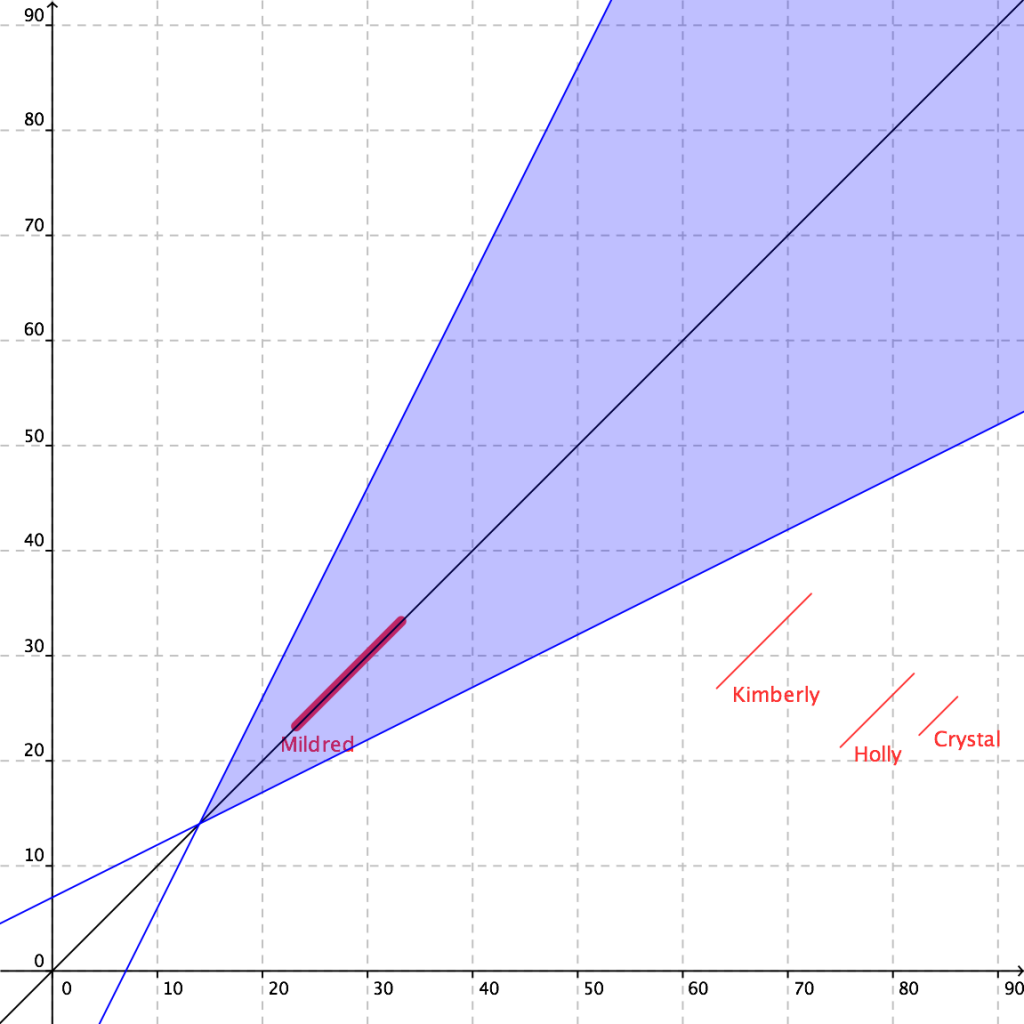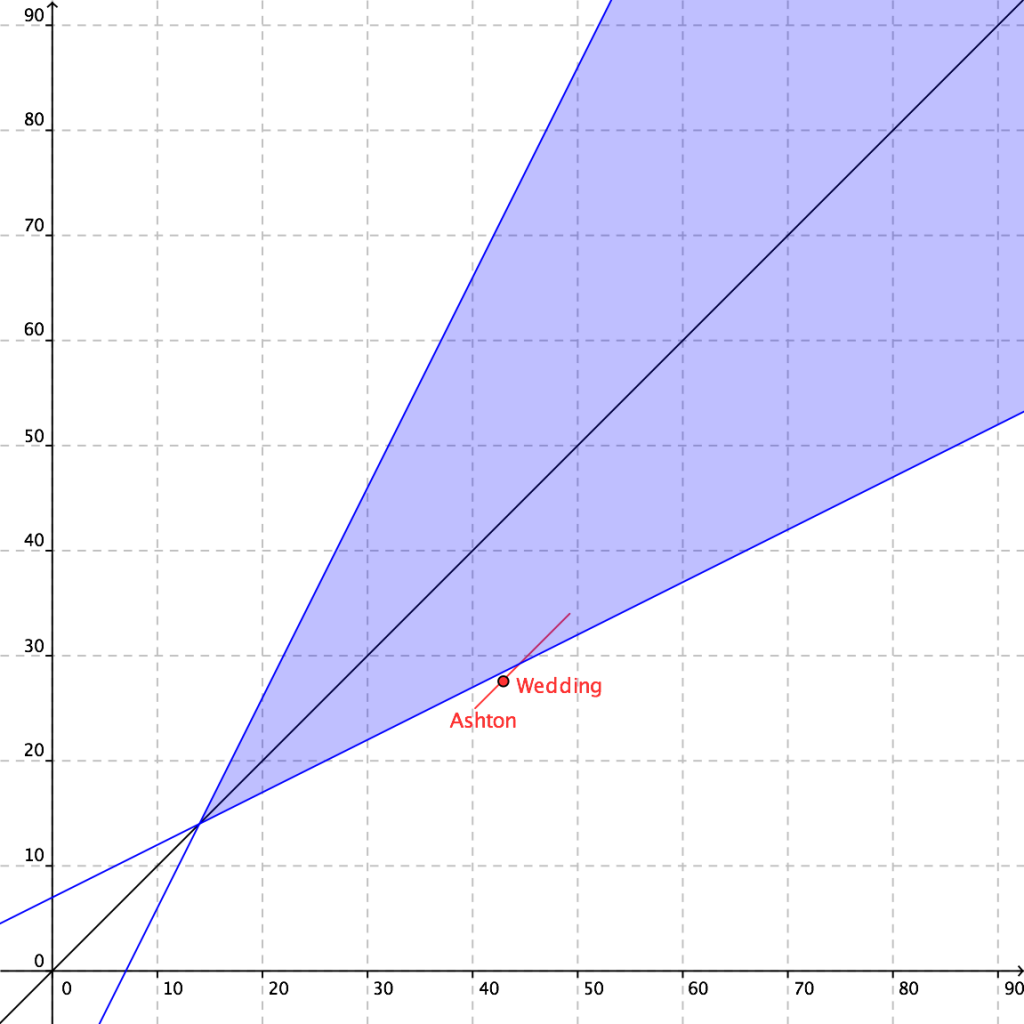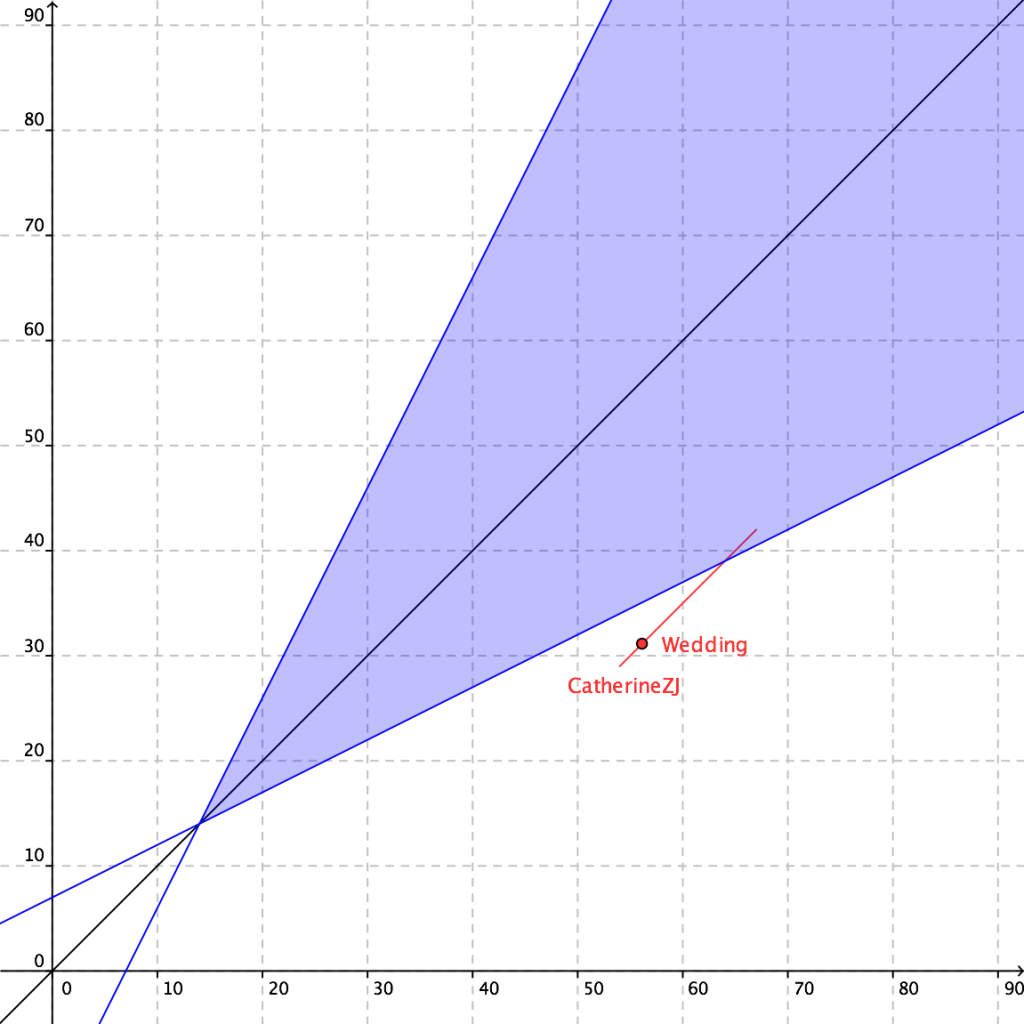A Rule for Summer Lovin'
With summer now in full swing (in the northern hemisphere, at least), romance is undoubtedly in the air. The longer days are perfect for evening walks on the beach, dinner by sunset, or the always romantic late-afternoon pie eating contest. And while it is easy to let your better judgment swim away through the humid air, it is sometimes important to consider how your relationship may be viewed by your peers.
One of the most well-known rules of thumb is the half-your-age plus seven rule. This rule tries to quantify the intuitive idea that if you are dating someone younger than you, they should not be TOO much younger than you. Specifically, the rule says:
- You should not date anyone before the age of 14.
- Once you are 14, you should not date anyone whose age is less than half of your age, plus seven years.
Mathematically, we can express the rule as follows: if we let A denote the older person's age, and a denote the younger person's age, then the rule states that
a ≥ A/2 + 7.
Of course, a lower bound on a can be transformed into an upper bound on A - by transforming the above inequality we see
A ≤ 2a – 14.
(If you're a teacher looking for an introduction to inverse functions, look no further!)
These two inequalities determine regions in the plane, and by considering them simultaneously they tell us that you shouldn't date someone who is younger than half your age plus seven years, or older than twice your age minus fourteen years. If we graph this region in the plane, we find the following acceptable region of ages for you to date:

Graph of the feasible dating region.
The black line represents your age as a function of time (increasing at a rate of one year per year). The blue region shows the range of acceptable ages for you to date at a particular point in time. For example, when you are 14, it is only acceptable to date 14 year olds. When you're 20, you can date people between the ages of 17 and 26. When you're 30, you can date between the ages of 22 and 46, and so on.
Once nice thing about the rule is that even if you want to date someone outside of the blue region above, given enough time that person will enter the region. If you're 30 and in love with a 20 year old, all you need to do is wait four years - you will then be 34, and the object of your desire will be 24, just inside the acceptable region, since 34 ÷ 2 + 7 = 24.
We can also see how various high-profile couples fit into this framework. For example, the age difference between Ashton Kutcher and Demi Moore made headlines throughout their relationship. She is approximately 15.24 years older than him, so if we plot his age as a function of time through the course of their relationship, we obtain the following:
Here the black line represents Demi's age, while the red line represents Ashton's. When they first started dating (in 2003, according to Wikipedia), by this measure Ashton was too young. Even when they got married, he was just outside of her acceptable dating region. However, by the time they split up the age difference was no longer unacceptable - it appears that Ashton's age was acceptable for roughly half the duration of their relationship.
For another example, consider Michael Douglas and Catharine Zeta-Jones. This example is particularly nice mathematically, since their age gap is exactly 25 years. This Hollywood couple is still together, so if we map her age as a function of time, from the start of their relationship to present day, we get the following:
Here we see that Catherine Zeta-Jones has only been inside of Douglas's acceptable region for a relatively short period of time. This makes sense, since a 25 year age gap only begins to be acceptable when the older party is 64.
For an even more extreme example, we can consider the poster boy for violation of this rule: Playboy founder Hugh Hefner. It would take too long to try and trace the ages of all of his girlfriends, so I will focus only on four: his first wife, Mildred Williams, his second wife, Kimberly Conrad, former girlfriend Holly Madison, and his most recent squeeze (and runaway bride) Crystal Harris.
While Hef keeps getting older, the same cannot be said of his love interests:

Hugh Hefner and everyone else.
Though you wouldn't know it based on his present behavior, Hef's first wife was actually older than him, though just barely so. This is why Mildred's line is right in the middle of Hef's acceptable region for the duration of their 10 year marriage. But the other three women mentioned above were always too young for Hef by this measure. For his most recent relationship, the gap between his age and Crystal's is more than 60 years! This means that in order for Crystal to make it into the acceptable region, they will have to stay together until some time in the year 2060, when she will be 74 and he will be 134. Given that the durations of Hef's relationships appear to be decreasing, I would say this is unlikely.
There are many ways to modify this model, of course. One common explanation for one person dating someone much older is that the older person may be quite wealthy. While this doesn't always eliminate the social stigma, it does sometimes soften it a bit. So perhaps this model should account for an individual's personal wealth too - in other words, maybe it's possible for an individual to essentially buy a larger acceptable region.
You'll also note that the acceptable region grows as a person ages. By this rule, a 100 year old person could date someone as young as 57. But maybe this gap seems unreasonable - perhaps the boundaries of the acceptable region should not be lines, but should grow more slowly as a person ages. Conversely, maybe you, like Aaliyah, believe that Age Ain't Nothing but a Number, and you therefore think these rules could stand to be loosened somewhat. Certainly these types of modifications could be made as well. If this model does not agree with your intuition, I'd encourage you to play around with it until it does.
If you can find a romantic partner to tweak the model with you, even better. Just make sure you choose someone age appropriate.
Psst ... did you know I have a brand new website full of interactive stories? You can check it out here!



